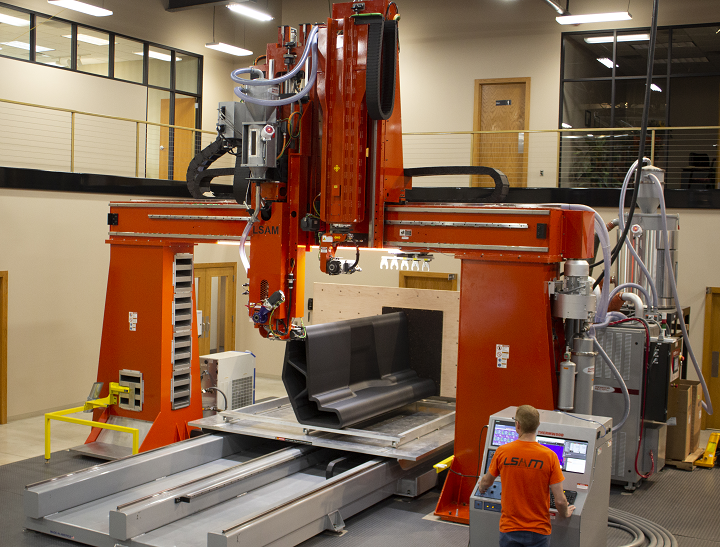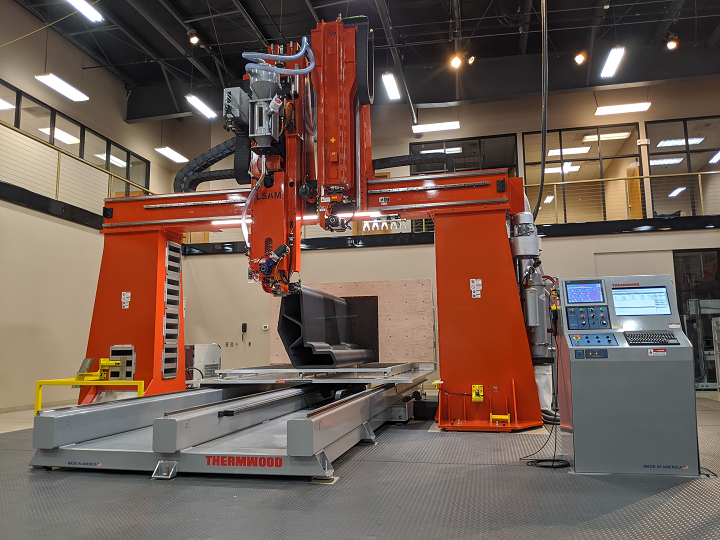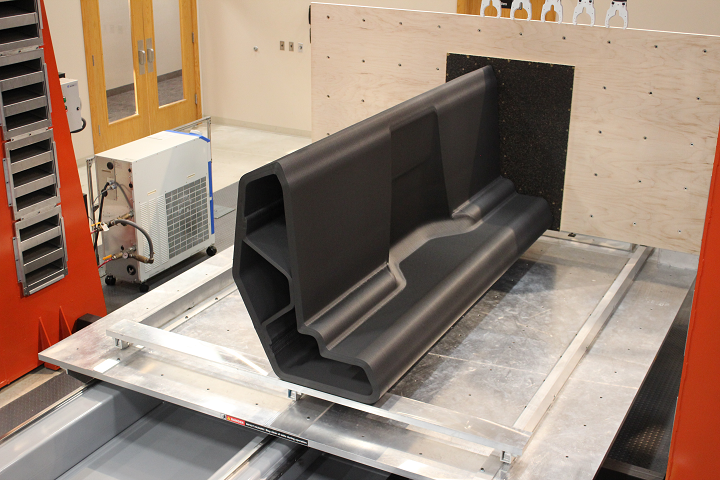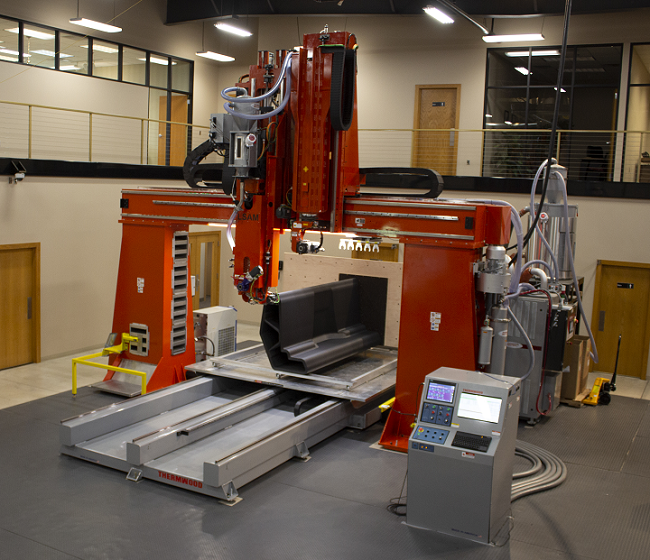Indiana-based Thermwood Corporation is the oldest manufacturer of highly flexible 3 and 5 axis CNC routers, and entered the 3D printing industry five years ago with a unique hybrid machine. Since then, it’s introduced, and continued improving upon, its Large Scale Additive Manufacturing (LSAM) systems. These machines have both 3D printing and trimming capabilities, and are obviously used for making really big parts, like thermoplastic composite molds and tooling, for a variety of industries, such as aerospace, automotive, defense, government, marine, and military. Users have 3D printed parts that stand over 20 feet tall and weigh up to 50,000 pounds on Thermwood’s larger LSAM machines, using the company’s patented Vertical Layer Print (VLP) technology.
Instead of printing on a horizontal plane, VLP prints on a vertical one, which makes it possible to fabricate much taller parts than prints with horizontal layers could accomplish. But now, Thermwood has announced that it has successfully demonstrated a new approach to large-format 3D printing with this technology.
Moving gantries, high walls, and a fixed table are the typical features of Thermwood’s LSAM 3D printing systems, and when vertical printing is required for a tall part, a vertical moving table is used, which is supported by stainless steel belts that slide right on top of the main fixed table. However, Thermwood released its MT last year, which is a less expensive LSAM printer with a moving table and fixed gantry but the ability to trim on the same machine. Just like the larger LSAM systems, parts are 3D printed at high speed and then machined to their final shape and size once they’ve cooled.
To achieve vertically 3D printed tall parts on the LSAM-MT, the machine would need what the company referred to in a press release as a “fundamentally different approach.”
Thermwood’s new VLP approach prints parts on a support structure, which rides along on the moving table but is fixed in place to the back. The back of the main table features a second 5′ x 10′ print table that’s been vertically mounted, and as the part continues to get larger, the moving table pulls it onto a support structure. This process allows the LSAM-MT 3D printer to fabricate parts that are up to 5′ x 10′ x 10′ (ZXY axes). It reminds me somewhat of a much larger version of conveyor belt 3D printers, though as far as I’m aware, those allow for long parts but don’t ensure vertical 3D prints.
In order to validate its new VLP process, the company printed parts out of low- and high-temperature thermoplastics. The first of these parts was made using carbon fiber reinforced ABS, often the choice for parts like fixtures, foundry patterns, industrial tooling, and structural components that operate at or right above room temperature.
The second high temperature part Thermwood built using the new approach weighed in at 1,190 pounds—the limit for a moving table system. It took just shy of 17 hours to complete and was printed out of a Techmer blended 25% carbon fiber reinforced PSU/PESU material, which, along with PEI, is used most often for tooling and molds that work at higher temperatures, typically with pressure and vacuum in an autoclave.
Not only do Thermwood’s LSAM 3D printers have practically no weight limitations, but they can also print large parts that are able to maintain “vacuum to aerospace standards” without having to add a secondary coating. Now, with its new and improved VLP approach, the company is building and delivering large-scale 3D printing systems that are actually up to 40 feet long.
(Source/Images: Thermwood Corporation)
The post Thermwood Develops New Vertical Tech for Large Format 3D Printing appeared first on 3DPrint.com | The Voice of 3D Printing / Additive Manufacturing.






